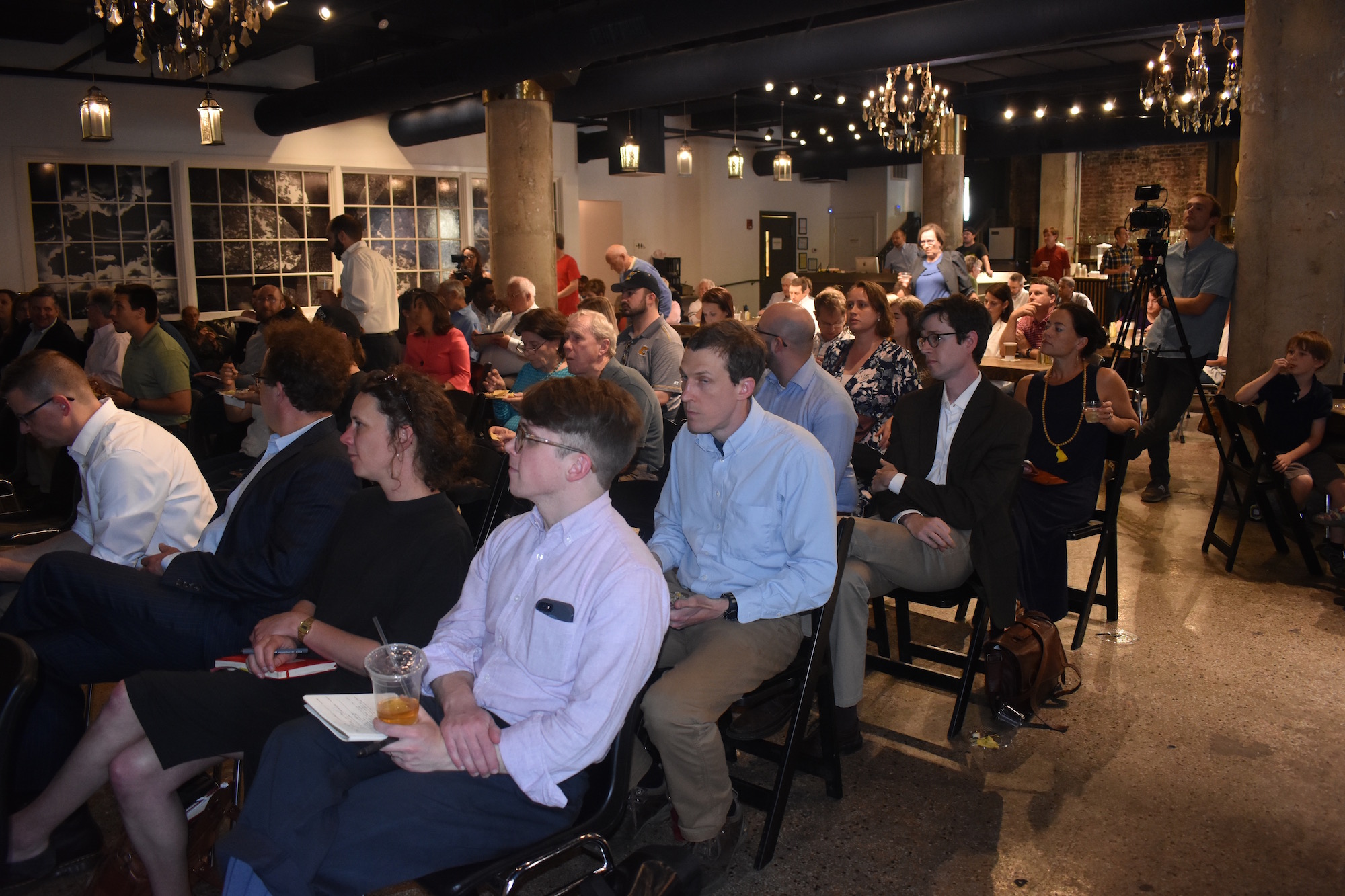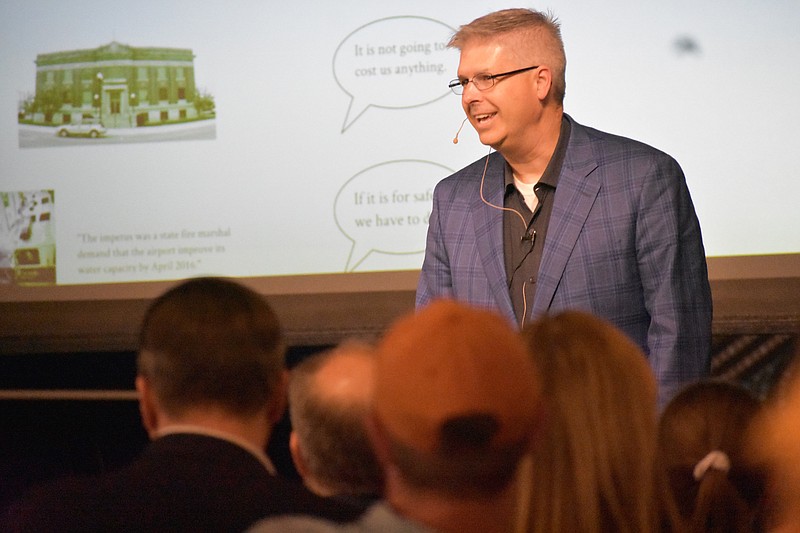Maggie Tate and her husband moved into Chattanooga's Cameron Harbor last year because they were looking for a more walkable, urban place to live.
With family in the area and their youngest going off to college, Tate said they were looking for a more "dense" environment with walking trails and plenty of activities that they wouldn't have to drive 45 minutes to get to from the suburbs, like at their previous home in Austin, Texas.
 Chuck Marohn from Strong Towns, a Minnesota-based nonprofit focused on small, incremental development in communities, was the speaker at the CIVIQ quarterly lecture series at the Camp House this month. About 125 people attended the event organized by the Chattanooga Design Studio. This past February, the Design Studio released a study on the development of South Broad Street.
Chuck Marohn from Strong Towns, a Minnesota-based nonprofit focused on small, incremental development in communities, was the speaker at the CIVIQ quarterly lecture series at the Camp House this month. About 125 people attended the event organized by the Chattanooga Design Studio. This past February, the Design Studio released a study on the development of South Broad Street."When we were reimagining the second chapter of our life, there were things like that on our list," she said.
Tate was one of the nearly 125 locals who turned out to the Chattanooga Design Studio's quarterly lecture series, CIVIQ, last week, which featured Chuck Marohn, engineer and founder of the national media nonprofit Strong Towns.
A native Minnesotan, Marohn is a former city engineer and planner who said he grew "disillusioned" with the way cities were investing in development. He started Strong Towns in response as a way to encourage incremental growth in communities nationwide that would allow them to become more self-sufficient and resilient.
Marohn described downtown Chattanooga as a place "dripping with opportunity."
"Your downtown has a lot of missing teeth – you've done a lot of damage to yourself," he said to the audience. "But what is left is really spectacular."
While Marohn mostly cited examples from other cities on responsible, incremental growth, he did touch on some of Chattanooga's downtown neighborhoods. Marohn said small investments in a community can be more impactful than large, "catalytic" developments, like the new Lookouts Stadium proposed in the South Broad Street study developed by the Design Studio.
Council members recently approved a plan for the redevelopment of the South Broad Street area - about 400 acres south of Interstate 24 that includes the new stadium along with housing, parks and commercial areas aimed at bringing more people and businesses south of the freeway. The study noted the area has captured only 1 percent of more than $1 billion invested in the central city over the past three years.
"What we are starting to recognize is that we are really, really good at building new stuff but really horrible at making good use of it," Marohn told the crowd. "We can create a new product but can't make it work well."
Marohn cited an example from his hometown of Brainerd, Minn. where the city council approved 26 years of tax subsidies to help a Taco Johns move into an "old and blighted" block. The total tax base for the new fast food restaurant was $803,200 compared to the collection of businesses on a "dilapidated" block up the street, which cost no money to the city, and had a total tax base of 41 percent more, or over $1.1 million.
Marohn said smaller investments can vary - from cleaning up parks to building bike paths and wider sidewalks along already existing streets. One example Marohn provided was turning a $40,000 home into a $44,000 home instead of a $300,000 that pushes existing residents out. By raising that home's value by ten percent every few years, the neighborhood would experience an increase in quality of life and it wouldn't come at a large expense.
This way of thinking is opposite of what was done in the city's Southside in recent years, Marohn observed.
"A lot of the development there has been successful in raising the prosperity of the neighborhood," he said. "But it has resulted in a lot of the people who identify with that neighborhood no longer being able to afford to live there."
Sally Morrow, an urban designer for the Design Studio, said while the South Broad street plan cites the stadium as being a catalyst for the area, the nonprofit understands the importance of a "balanced approach" to development.
Morrow said one opportunity is improvements along 26th street, which is an existing neighborhood street. Small investments could be planting street trees or widening sidewalks to make it more pedestrian-friendly. She also said there are two parks in the area, Pringle and Harris Johnson parks, that could see small improvements for the neighborhood.
"While it's attractive to focus on the stadium, I think the beauty of (Marohn's) message is there are small things we could be doing in the mean time," she said. "These things could be really catalytic for this neighborhood and really meaningful short-term solutions."
Contact staff writer Allison Shirk at ashirk@timesfreepress.com, @Allison_Shirk or 423-757-6651.
